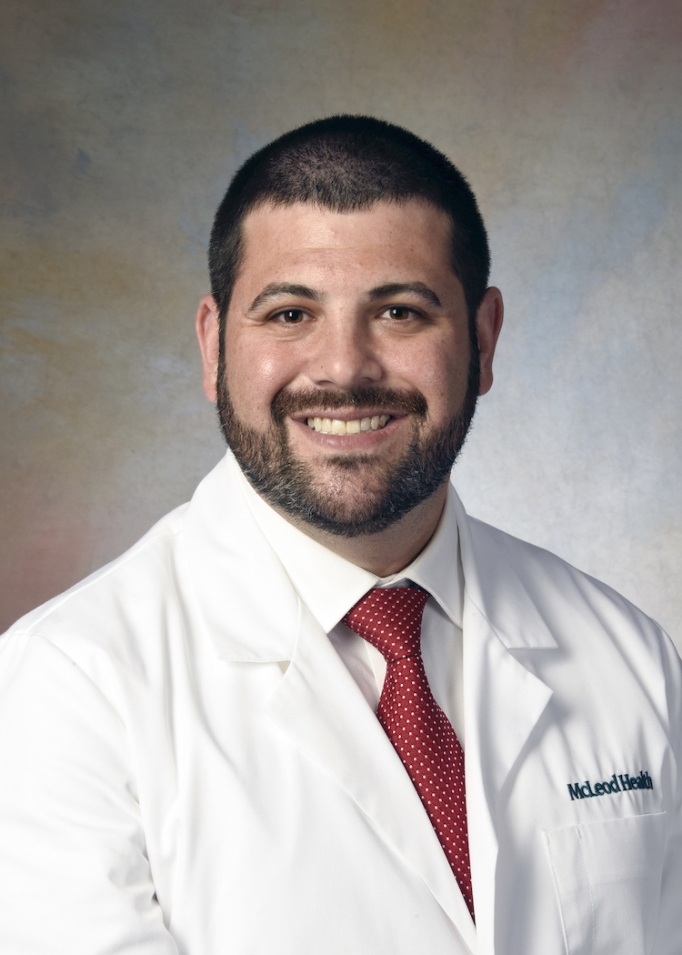Filtering Out the Risk of Stroke

The aortic valve is one of the four heart valves that control the flow of blood through the heart. Aortic stenosis is a disease characterized by severe narrowing of the valve that directs blood flow out of the heart. It most commonly affects those patients over the age of 65. It also is occasionally seen in younger patients, such as those born with a bicuspid valve, which is an aortic valve with two flaps instead of the normal three; and patients with chronic kidney disease.
Over time, the three flaps on the aortic valve that open and close to control the blood flow can become stiff from a buildup of scar tissue and calcium. This reduces the motion of the valve and its ability to open sufficiently to allow for good blood flow out of the heart. When this happens, the heart needs to work harder to move blood throughout the body.
Common symptoms of aortic stenosis include chest pain, shortness of breath, dizziness, passing out, fatigue, or a decrease in exercise tolerance. The disease is usually identified by a non-invasive study called an echocardiogram or ultrasound of the heart. For those patients who are found to have severe aortic stenosis and experience symptoms such as those described above, the only effective treatment is to replace the aortic valve.
Transcatheter Aortic Valve Replacement (TAVR), a minimally invasive procedure being performed at McLeod Regional Medical Center, allows physicians to replace a patient’s diseased or damaged heart valve without removing the old valve. For some patients, particularly older patients and those with medical conditions that make them a poor candidate for open-heart surgery, this procedure is an alternative option to traditional surgical aortic valve replacement.
TAVR is performed in a similar manner as a heart catheterization. The physician inserts a catheter, a long flexible thin tube with the artificial valve, through a small incision in the groin, then guides it to the heart using X-ray imaging. The valve is precisely positioned across the diseased valve. The new valve is then deployed and starts functioning immediately.
While TAVR can save lives and significantly improve quality of life, like all medical procedures, it involves a small amount of risk. One of the risks of many valve procedures is a stroke. A stroke results when there is an interruption in the blood supply to an area of the brain. It can lead to neurologic deficits such as confusion, trouble with speech or vision, weakness, or numbness of the extremities. This can be caused by low blood pressure, disease in the arteries of the head and neck, blood clots, or debris (emboli).
TAVR is comparable with surgical alternatives in terms of effectiveness and safety, however, there is still a risk that pieces of the damaged heart valve can break loose during the procedure, travel through the arteries toward the brain, and potentially cause a stroke.
To reduce the risk of stroke, a Cerebral Protection System can be utilized in many patients to capture debris dislodged during the TAVR procedure before it reaches the brain and potentially causes brain injury and stroke.
The Cerebral Protection System uses embolic filters, which allows the blood to still circulate through to the brain while trapping debris or blood clots. Before the TAVR procedure begins, the device is delivered through a small catheter advanced from an artery in the right wrist. The filters are positioned in the main arteries that carry 90 percent of the blood to the brain. Once the TAVR procedure is completed, the filters with the captured debris are removed.
Patients with symptoms and/or echocardiogram findings of significant valve disease can be referred to the McLeod Structural Heart Clinic where a team of interventional cardiologists and cardiac surgeons meet with the patient and family to evaluate their symptoms and discuss management options. The McLeod Structural Heart Team Coordinator Ryan Hill, NP, then helps arrange the patient’s required testing, which typically includes a cardiac catheterization, lung screening, CT scan, carotid ultrasound, and lab work. Once the results are available, the Structural Heart Team reviews the findings to determine the best treatment plan for the patient.
While the risk of stroke can never be eliminated completely, the use of the Cerebral Protection System at McLeod Health reduces the risk of stroke, gives our TAVR patients the best opportunity for a stroke-free outcome, and provides peace of mind for our patients and their families.
Currently, McLeod Regional Medical Center is the only hospital in the Pee Dee Region performing TAVR procedures and offering Cerebral Protection for patients who are candidates for treatment.
Dr. Brian Blaker is an Interventional and Structural Cardiologist with McLeod Cardiology Associates. Dr. Blaker serves as the Medical Director of the McLeod Structural Heart Program. Structural heart disease can be present at birth or develop with age. It refers to defects in the heart’s valves, walls, or chambers.
The McLeod Structural Heart Program specializes in percutaneous (minimally invasive) and surgical treatment of patients with a variety of heart disease, including patients who do not qualify for conventional open-heart procedures. Examples of minimally invasive treatments include Transcatheter Aortic Valve Replacement (TAVR) for the treatment of aortic stenosis, MitraClip for the treatment of mitral regurgitation, and ASD/PFO closure.
Physician and self-referrals are welcome by calling 843-667-1891.
-
McLEOD REGIONAL MEDICAL CENTER FLORENCE
843-777-2000 -
McLEOD DARLINGTON
843-777-1100 -
McLEOD DILLON
843-774-4111 -
McLEOD LORIS
843-716-7000 -
McLEOD SEACOAST
843-390-8100 -
McLEOD CHERAW
843-537-7881 -
McLEOD CLARENDON
803-433-3000



-
McLEOD REGIONAL MEDICAL CENTER FLORENCE
843-777-2000 -
McLEOD DARLINGTON
843-777-1100 -
McLEOD DILLON
843-774-4111 -
McLEOD LORIS
843-716-7000 -
McLEOD SEACOAST
843-390-8100 -
McLEOD CHERAW
843-537-7881 -
McLEOD CLARENDON
803-433-3000
 Find a Doctor
Find a Doctor  Locations
Locations  Services
Services